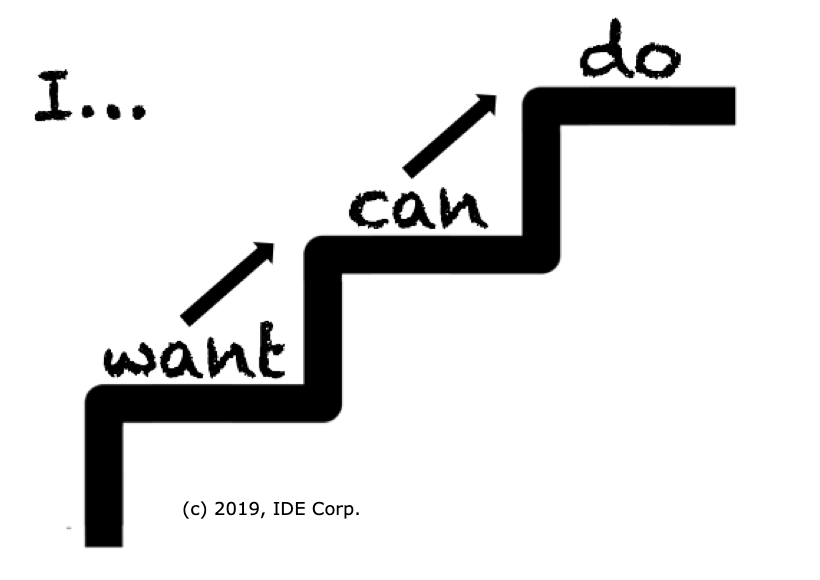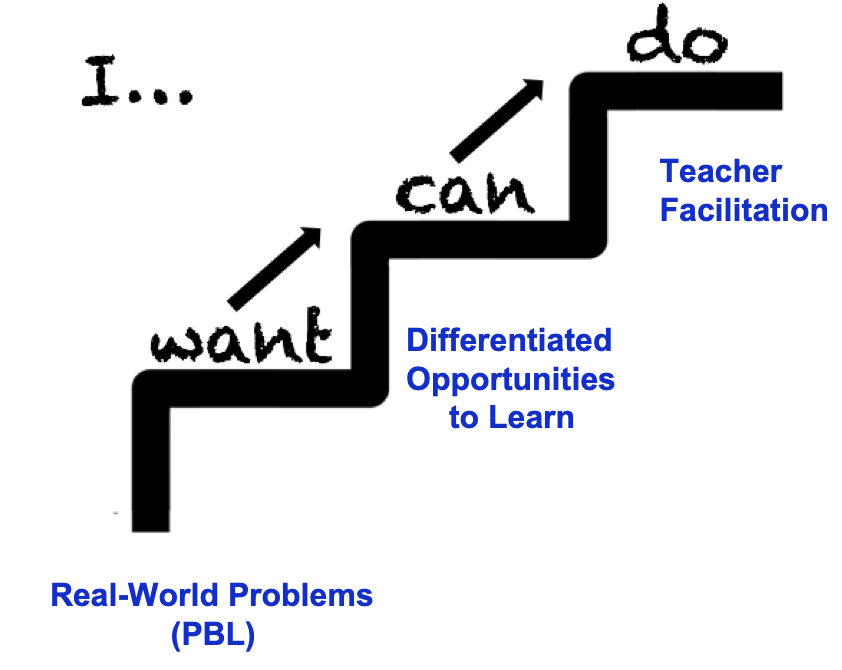How do you ensure that students learn? … and not just for the moment or the test, but for the long term? How do you reduce “summer slide” or the fear that, if you do not review for a test, the students will not remember the content? That is, how do you produce meaningful learning that gets lodged in long-term memory?
Brain researchers tell us that for information to be retained, it must make sense and have meaning (Sousa, 2017). In studying what drives people, Daniel Pink (2011) notes that one of the factors is purpose. It’s all about personal context!
Most educators today are familiar with the “I Do, We Do, You Do” approach to instruction. As an example, when I was twelve, my dad taught me how to use a protractor. He demonstrated; he then had me use it with his guidance; and then he had me work on my own. But that scenario is missing a key factor.
The “I” in “I Do, We Do, You Do” represents the teacher, and learning does not begin with the teacher. You can’t make another person learn (Gattegno, 2010-2017). Learning begins with the learner’s “felt need” to learn. That’s not to say “I Do, We Do, You Do” doesn’t work. It does; but with a key condition.
Student-Driven Learning follows the approach, “I Want, I Can, I Do,” with the “I” being the student.

Let me back up to just prior to that protractor moment with my dad. I wanted to build a clubhouse, and my dad helped me. When I said we needed a ladder to the second floor, he suggested, “We should build a staircase!” I was excited and said, “How do we do that?” He responded, “We’ll have to cut the sides at right angles, so we’ll need a protractor.” I was in! I wanted to build a staircase and not a ladder, and, thus, I wanted to learn how to use a protractor to accomplish my goal.” (My dad was a masterful teacher.)
The beginning of learning is when the student says, “I Want” to learn something. In student-driven classrooms, such as The Learner-Active, Technology-Infused Classroom, that state of being is provided by a compelling problem-based task to solve, and, within that larger context, a teacher’s masterful facilitation offering just the right question or challenge to stimulate the student’s appetite for more learning. With that “felt need” in place (“I Want”), the next step is, as Einstein would say, to provide the conditions under which students learn.
Teachers who are “bridge builders” provide students with differentiated opportunities to learn. Viewing a rubric and an activity list, the student will feel hope and enter the “I Can” learn stage. Within this stage of student-driven learning, the teacher may offer small-group mini-lessons or one-on-one facilitation in which the “I Do, We Do, You Do” approach is employed. It stands as a critically important way for students to learn.
As students move from “I Want” through believing “I Can,” the next phase is, “I Do.” In a student-driven learning environment, a masterful teacher facilitates students to success: offering advice on the process of learning and instruction in content, all with the end-goal of ensuring students do learn. When learning begins with the student (“I Want, I Can, I Do”), it is more likely to be retained for the long-term.

References:
Gattegno, C. (1987–2010). What we owe our children: The subordination of teaching to learning. New York: Educational Solutions Worldwide.
Pink, D. (2011). Drive: The surprising truth about what motivates us. New York: Riverhead Books.
Sousa, D. A. (2017). How the brain learns. (5th ed.). Thousand Oaks: Corwin Press.
